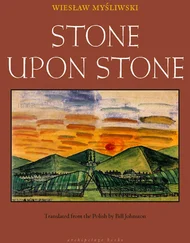In addition to the CD, there would be a vinyl release (which would just be the 12-by-12 cover with an old dummy piece of vinyl in it — he didn’t actually have the ability to press vinyl). But the paper center label would be carefully covered with one of Nik’s hand-painted adhesive labels. His Pause Collective was strictly for wackier, non-pop experiments. Its elaborate center label featured a color photocopy of a pen-and-ink snake carefully drawn in hundreds of hatched lines with a distinctly occult/medieval feel. The “logo” contained the word Pause hidden in the complicated hatches of the snake. The name of the album, the copyright date, the catalog number, and the name of the artist (uh, Nik Worth) were inked on top of the photocopy in a careful, matched script of Nik’s devising. The back of the LP usually had liner notes. These would be written on the cardboard in the same font. A photocopy, or sometimes a typed copy, of the notes would be pasted carefully in the Chronicles. And another copy of the liner notes would be folded up and tucked next to the CD in the digital edition, as well as reproduced in a photocopied and barely readable size on the back of the CD case itself. It was all quite systematic and gratuitously laborious. I loved its elaboration and counted on it. How deflated I would feel if he ever just handed me a blank paper sleeve containing only a blank compact disc with his name and the title Sharpie-scrawled across it. (Nik did make some faux bootlegs that had a cultivated amateur feel to them, but he never had the taste for the sloppy or the minimal. Even his bootlegs appeared to be made by obsessive fans with acute horror vacui.)
I unfolded and read the liner notes for The Ontology of Worth: Volume 2:
When I first met Nik Worth back in 1978, he was in two bands and not yet a star. He fronted the power pop band the Fakes. They would have three songs in the top ten by 1980. And back then I already guessed it. There were the clean, perfectly rendered songs of heartache and youth. The crystalline gorgeous harmonies got them compared to the Beatles. But they were also minimal in production, they never overwhelmed the songs with sentiment and bombast. They had a pared-down, solid unadorned sound. They resisted the ubiquitous processing of the time. (Remember gated reverb? Have you listened to any of those records lately?) They bucked the trends, the boilerplate, and yet — or maybe I should say, and so — attained top-seller status. That would have been career enough for anyone. But, as we also know, Worth also fronted the Demonics, and anyone familiar with their two brilliant albums knows that Worth was already testing boundaries and breaking new ground.
When he broke up the band in the early eighties, he embarked on a marvelous, unprecedented path of experiment and innovation. He would release a brilliant Fakes album every year, each one charting and succeeding. But he also nurtured a new path leading to his releasing two solo records under his own name, Nik Worth. These were made on a four-track in the living room of his isolated estate in the hills of Topanga, Western Lights. He was holed up for months, and rumors of a car accident or a drug habit multiplied. The truth was, Worth had gone through a nasty divorce from model Alize Clement. During the divorce proceedings, he was driving his vintage Triumph motorcycle on the PCH and crashed. No one knows the full details of the accident, but he retreated to his private hermitage in the mountains to recover. Part of his recovery included the recording of these ache-and-angst solo records. The critics praised the new direction. Both of the albums have cult followings, but neither of them charted.
Then there was nothing for four years. Until 1990, no releases from Worth except the Fakes’ album Here Are Your Fakes, a double album of previous hits and some unreleased songs from the vault. It was the top-charting album of 1989, and fans scoured it for clues about the future of Nik Worth and the Fakes. Nik Worth, we later learned, had been living as a Buddhist monk in a monastery in New Mexico. He took a vow of seclusion and adopted the Dharma name Jikan, which means “silence.” Would he ever record again? In 1990, we got our answer. Worth got the old lineup of the Fakes back together and recorded an all-new studio album, TAKE ME HOME AND MAKE ME FAKE IT. It is generally considered to be the sine qua non of nineties power pop albums. Then, in 1992, Nik Worth also released an album called The Ontology of Worth: Volume 20, on his own mysterious label, Sound Traces (later to become Pause Collective). This album was apparently the first of twenty planned releases starting with twenty and counting backwards to one. As soon as you dropped the stylus, you were hit with the central thematic conceit of the Ontology: side one contained six bled-together linked songs about a character called Man Mose. The entire side two, infamously, contained one “song,” a cacophony of feedback experiments that were somehow tied to the story of Man Mose. Full of cryptic and hermetic references, Man Mose (one gathers) lives in tunnels under the streets and hears things through the ground as he moves from place to place. He apparently makes or records his “music” all the time. Side two is the music MM hears (makes?). Underground music, indeed. Who would have guessed that what we were all waiting for was a collection of atonal, arrhythmic assault compositions mixed with concept sound poems?
Undeterred by a rather chilly reception, Worth would go on to produce eighteen more of these albums over the next twenty years, each more “underground” than the last.
What have we learned about Worth from this long journey of slow baroque noise, garage concrete music, Indonesian gamelan evocations, electronics, acoustic low-fi living room experiments, trance and Ramayana monkey chants, sound collages, narrative and anti-narrative, soundtracks for unmade films, dissonance and odd slack-key guitar tunings, Komoso ametric and polymetric music, tape loops and audiotape manipulations, dub and sampling, prepared guitar and piano modifications, silence and his so-called “sounded silence”? And always in there somewhere, however faintly, Man Mose appearing and disappearing like the trope that refused to die? Does the willfully obscure and difficult music play against and in effect count on the need to make order of it, to make it cogent, what Karl Popper described as “the intrinsic and constant drive to find congruence”?
Critics have called it “naive and embarrassing” (Village Voice, 1992). THe Ontology has also been called “the most pretentious work of any rock star, anywhere, ever” (New Musical Express, 1995). And about onTologY: Volume 3: “A painful illustration of the limits of autodidacticism” (Rolling Stone, 2001). But to those of us who stuck with it, there has been an undeniable power in these accumulations. If approached with an open mind and an open heart (and perhaps some mind-expanding hallucinogens), and if approached with a willingness to dwell in the endless runout groove of another’s obsession, these albums can lead you on a riveting journey. Is Volume 2, in fact, the penultimate record? Is this epic, eccentric freak ride coming to an end? Listen and judge for yourself. As Worth has said, “It’s all there, it’s all there.”
Mickey Murray
Greil Marcus Professor of Underground, Alternative, and Unloved Music
The New School for Social Research
I slipped the CD in my purse to listen to on my drive to work. I sat at my computer and went, as I always do, straightaway to Ada’s blog. I saw that she, too, had received Nik’s CD:
lowercase a:
daily musings of an unemployed but brilliant filmmaker
Читать дальше












